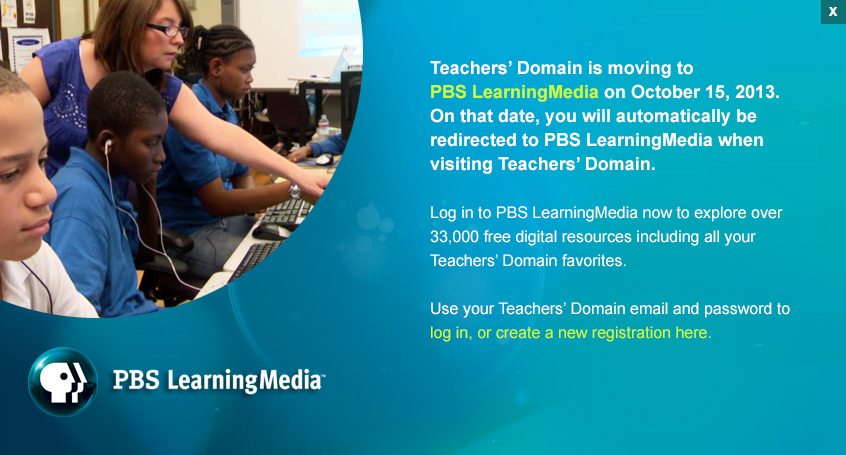Teachers' Domain - Digital Media for the Classroom and Professional Development
User: Preview
Source: NOVA: "Judgment Day: Intelligent Design on Trial"
This video segment from NOVA: "Judgment Day: Intelligent Design on Trial" reveals how genetic evidence helped to confirm an important component of Darwin's theory of evolution by natural selection: the common ancestry of humans and apes. In particular, it explains that humans have one fewer chromosome pair in their cells than apes, due to a mutation found in chromosome number 2 that caused two chromosomes to fuse into one.
Since the mid-1800s, biologists have generally shared the belief that all living things descended from a single common ancestor. Based on fossil evidence and comparative anatomy, Charles Darwin proposed that humans and great apes—which include chimpanzees, gorillas, and orangutans—share a common ancestor that lived several million years ago. More recent research has propped up Darwin's theory of common descent (also called common ancestry): genome analysis reveals the genetic difference between humans and chimps to be less than 2 percent. In other words, humans and chimps have DNA sequences that are greater than 98 percent similar.
While the genetic similarity between human and ape strengthened Darwin's theory, a significant, unexplained discrepancy remained. While great apes all have 48 chromosomes (24 pairs), humans have only 46 (23 pairs). If humans and apes shared a common ancestor, shouldn't both have the same number of chromosomes in their cells?
The phases through which chromosomes replicate, divide, shuffle, and recombine are imperfect, as DNA is subject to random mutations. Mutations do not always produce harmful outcomes. In fact, many mutations are thought to be neutral, and some even give rise to beneficial traits. To corroborate Darwin's theory, scientists would need to find a valid explanation for why a chromosome pair is missing in humans that is present in apes.
A fundamental part of the process by which science is done involves developing a testable prediction, also known as a hypothesis. Scientists offered two possible explanations for the discrepancy: Either the common ancestor had 24 pairs, and humans carry a fused chromosome; or the ancestor had 23 pairs, and apes carry a split chromosome. Their focused research led them to find a mutation on one human chromosome that explained what had happened.
In 2005, a peer-reviewed scientific journal published results of the tests. It turns out that chromosome 2, which is unique to the human lineage of evolution, emerged as a result of the head-to-head fusion of two ancestral chromosomes that remain separate in other primates. Three genetic indicators provide strong, if not conclusive, evidence of fusion. First, the banding (or dye pattern) of human chromosome 2 closely matches that of two separate chromosomes found in apes (chimp chromosome 2 and an extra chromosome that does not match any other human chromosome). Second, a chromosome normally has one centromere, or central point at which a chromosome's two identical strands are joined. Yet remnants of a second, presumably inactive centromere can be found on human chromosome 2. And third, whereas a normal chromosome has readily identifiable, repeating DNA sequences called telomeres at both ends, chromosome 2 also has telomere sequences not only at both ends but also in the middle.
To learn more about fossil and molecular evidence that supports common ancestry, check out Evolving Ideas: Did Humans Evolve?.
 Loading Standards
Loading Standards